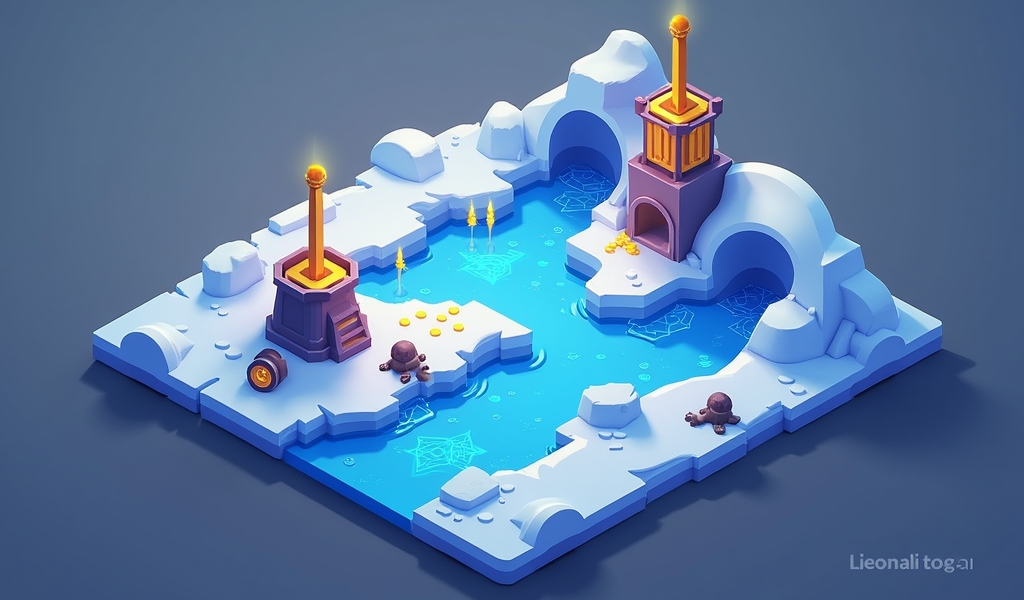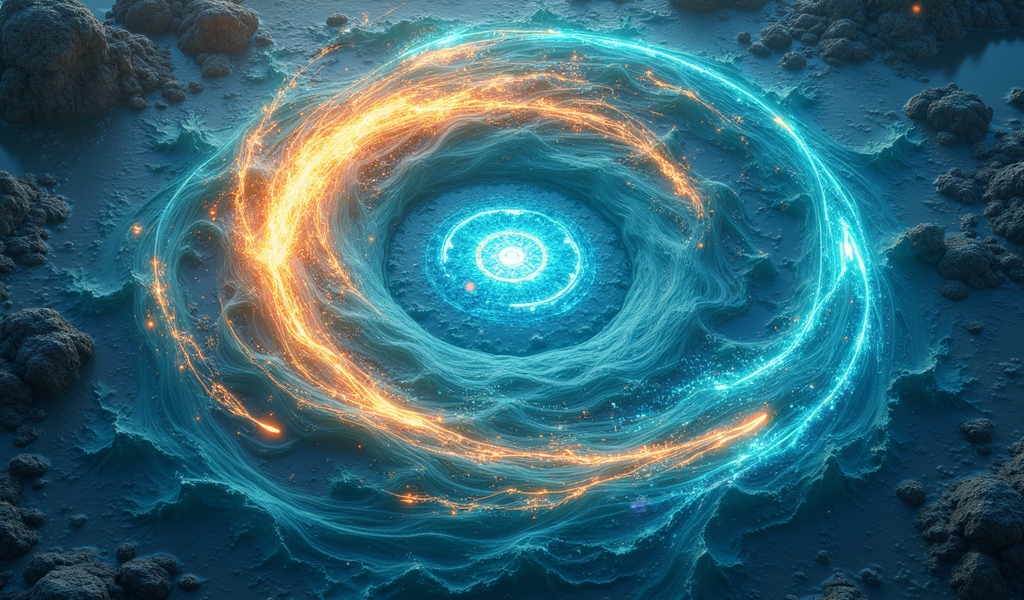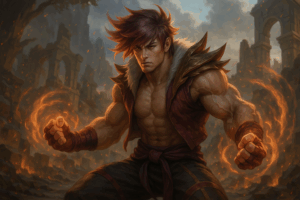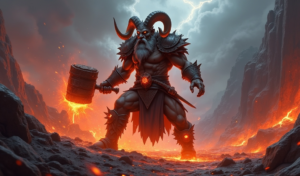Overview
To improve wave management in League of Legends, players must master seven essential techniques including freezing, slow pushing, fast pushing, bounce back, thinning waves, reset technique, and counter management. These strategic approaches to controlling minion waves create advantages in lane dominance, CS counts, and map pressure that ultimately separate good players from great ones across all competitive ranks.
Table of Contents
Want to improve wave management in League of Legends? You’ve come to the right place. Wave management is often the invisible skill that separates good players from great ones. Mastering minion wave control can dramatically improve your performance, regardless of your lane or champion preference.
In this comprehensive guide, we’ll explore seven essential techniques to help you gain lane dominance, secure more CS, and ultimately win more games through superior wave management. These strategies work across all ranks, whether you’re trying to escape Bronze or climbing through Diamond.
Understanding Wave Management in League of Legends
Wave management refers to the strategic manipulation of minion waves to create advantages in lane and across the map. It’s not just about last-hitting minions; it’s about controlling where the waves meet, how quickly they push, and using this control to your advantage.
Fundamentally, three states exist for minion waves: pushing toward you, pushing toward the enemy, or neutral (frozen). Your goal is to create the state that benefits your immediate objectives, whether that’s farming safely, setting up a gank, or preparing to recall.
To improve wave management skills, you need to understand how minions interact, the impact of last-hitting versus auto-attacking, and how champion abilities affect wave states. This knowledge forms the foundation for the techniques we’ll explore.
The Importance of Wave Management for Climbing Ranks
Wave management is arguably the most underrated skill in lower elos. While mechanical outplays might look flashy, consistent wave control creates reliable advantages that compound throughout the game.
Good wave management allows you to:
- Control when and where fights happen
- Deny enemy CS and experience
- Create safe farming opportunities
- Set up ganks for your jungler
- Prevent enemy ganks
- Create windows for objectives and roams
Studies from high-elo gameplay show that players with superior wave management often maintain CS advantages of 20-30 by the 15-minute mark, even in otherwise even matchups. This translates to a significant gold lead without necessarily securing kills.
Coaching sessions for Bronze and Silver players frequently highlight wave management as a primary area for improvement. Master these techniques, and you’ll have an edge over most opponents until well into Platinum.

Technique #1: Freezing the Wave
Wave freezing is perhaps the most powerful technique to improve wave management in League. When executed correctly, it forces your opponent to overextend for farm or miss CS entirely.
To freeze a wave:
- Allow the enemy wave to push slightly toward your side
- Maintain 3-4 more enemy minions than friendly minions
- Only last-hit minions (no auto-attacking)
- Position yourself between the enemy laner and their minions
The ideal freeze location is just outside your tower’s range, creating a long lane for your opponent to traverse. This makes them vulnerable to ganks and allows you to zone them from experience range.
Freezing works particularly well when you’re ahead and can threaten all-ins, or when playing champions with strong 1v1 potential. Champions like Darius, Irelia, and Nasus benefit tremendously from freezing.
Remember that top lane coaching often emphasizes freezing as a core strategy because of the lane’s isolation and gank vulnerability.
Technique #2: Slow Pushing for Strategic Advantage
Slow pushing is a technique where you gradually build up a large wave of minions by only last-hitting. This creates a “minion advantage” that can help you win trades, take turret plates, or create pressure elsewhere on the map.
To execute a slow push:
- Only last-hit minions (similar to freezing)
- Maintain a small advantage in your minion count
- Allow your wave to naturally grow larger over 2-3 waves
- Use the built-up wave for an objective (dive, plate, recall, roam)
Slow pushes are particularly effective before objective spawns (like Dragon or Herald) because they force an enemy to respond to the wave or lose significant resources. According to professional League analysts, properly timed slow pushes can create 30-45 second windows of advantage.
This technique is especially useful for mid-game transitions when you want to improve your laning phase impact across the map. Mid laners can slow push before roaming to ensure they don’t miss much CS.
Technique #3: Fast Pushing to Create Map Pressure
Fast pushing is the art of quickly clearing a wave to immediately create pressure. This technique is all about efficiency and timing.
To fast push effectively:
- Use abilities to clear the wave as quickly as possible
- Auto-attack minions (not just last hitting)
- Focus on quickly getting the wave to the enemy tower
- Time your fast push with an objective or team rotation
Fast pushing is ideal when you need to create immediate pressure, such as when your team is setting up for Dragon or Baron. It’s also essential when you need to recall but don’t want to lose minions to your tower.
Champions with strong waveclear like Viktor, Sivir, and Anivia excel at fast pushing. This technique works particularly well for mid lane players who want to roam or help their jungler secure objectives.
Fast pushing can create windows of opportunity where you force the enemy to choose between responding to your push or contesting an objective elsewhere. This “lose-lose” scenario is a hallmark of high-level macro play.
Technique #4: The Bounce Back Method
The bounce back (or reset) method uses tower mechanics to manipulate wave positioning. This technique is particularly useful when you need to recall safely without losing CS or when setting up future waves.
To execute a bounce back:
- Fast push a wave into the enemy tower
- Let the tower kill your minions quickly
- The next enemy wave will start pushing toward your side
- Return to lane as the wave pushes to you
This technique ensures you miss minimal CS when recalling and sets up favorable wave positions. It’s especially important for champions who need specific item power spikes or are vulnerable when overextended.
The bounce back method is a core concept taught in Silver to Gold coaching sessions, as it prevents the common low-elo mistake of recalling with waves crashing into your tower.
When timed correctly, bouncing waves allows you to maintain CS leads while still having the freedom to reset for items or heal. According to wave management guides, properly executed bounce backs can save up to 9-12 CS per recall timing.

Technique #5: Thinning Waves for Control
Wave thinning involves selectively killing certain minions to manipulate wave dynamics. This technique requires finesse but offers precise control over wave positioning.
To thin waves effectively:
- Kill only ranged minions to slow down enemy pushing
- Kill only melee minions if you want to push faster
- Leave one or two caster minions alive when bouncing
- Use abilities that can target specific minions
Thinning waves is particularly useful in volatile matchups where you want to maintain wave control without fully committing to a freeze or push. Coaching for beginners often introduces this concept as players develop more nuanced understanding of lane dynamics.
This technique shines in situations where you want to keep the wave in a relatively neutral position but slightly favoring one side. It’s often used by high-elo players to set up ganks while minimizing farm loss.
Technique #6: Reset Technique
The reset technique creates a completely neutral wave state where both waves meet in the center of the lane. This is useful when you want a “clean slate” after a messy lane situation or when transitioning to mid-game.
To execute a proper reset:
- Fully clear the enemy wave
- Ensure your wave crashes into the enemy tower
- Allow the tower to completely clear your wave
- New waves will meet in the middle of the lane
Resets are valuable after a kill or when returning to lane after a long absence. They provide a neutral starting point for implementing other wave management strategies.
This technique is commonly used in low elo coaching to help players recover from disadvantageous wave positions. Rather than trying to fix a bad wave state, sometimes it’s better to fully reset.
According to data from OP.GG, higher win-rate players tend to execute intentional resets after securing kills rather than pushing haphazardly, showing the value of this calculated approach.
Technique #7: Counter Wave Management
Counter wave management involves reading and responding to the enemy’s wave manipulation strategies. This is perhaps the most advanced technique as it requires understanding not just your own objectives but predicting your opponent’s intentions.
To counter enemy wave management:
- Identify their wave strategy (freeze, slow push, etc.)
- Apply the appropriate counter technique
- Break freezes with champion abilities or jungler help
- Match push timing for roaming opponents
- Use wave vision to track enemy jungler
For example, if an enemy is attempting to freeze, you can break their freeze by hard pushing or calling your jungler to help shove. If they’re slow pushing for an objective, you can match their timing or force an engagement before their wave builds up.
Counter wave management is emphasized in online League coaching sessions for players looking to reach Diamond and beyond, where opponents understand and actively use wave strategies.
Conclusion
To improve wave management in League of Legends, you need to master these seven techniques and understand when to apply each one. Wave control isn’t a fixed strategy but a dynamic response to game conditions, matchups, and objectives.
Start by practicing one technique at a time in normal games or practice tool. Focus first on freezing and basic slow pushing, as these create the most immediate advantages in lane. As you get comfortable, incorporate fast pushing, bounce backs, and more advanced techniques.
Remember that wave management is a skill that compounds over time. Small CS advantages create item leads, which create fight advantages, which secure objectives and ultimately wins. The best players aren’t just mechanically skilled—they understand how to control the fundamental rhythm of the game through wave manipulation.
By consistently applying these seven techniques to improve wave management, you’ll gain an edge over opponents who rely solely on mechanical skill. Your CS will improve, your deaths will decrease, and your climb will accelerate.
Frequently Asked Questions
What is the easiest wave management technique for beginners?
The bounce back method is generally easiest for beginners to implement as it only requires pushing the wave fully into the enemy tower before recalling. This creates a natural push back to your side, allowing you to catch the wave when you return to lane.
How do I break an enemy freeze?
To break an enemy freeze, you need to push enough minions into their freeze position to make their tower hit the wave. You can do this by using AoE abilities to quickly damage the wave, or by calling your jungler to help you shove the wave in.
When should I freeze vs. push the wave?
Freeze when you want to deny the enemy CS, you’re stronger in extended trades, or you want to set up a gank. Push when you need to recall, want to roam to another lane, or need to help with an objective like Dragon or Herald.
How does wave management change in the mid to late game?
In mid to late game, wave management becomes more about map pressure and less about lane advantages. Focus on slow pushing side lanes before objectives, clearing super minion waves quickly, and ensuring minions aren’t hitting your towers during team fights.
How do I improve wave management if my champion has poor waveclear?
With poor waveclear champions, focus more on freezing and thin wave techniques rather than fast pushing. You can still slow push by being patient and building up waves over time, and consider taking Teleport to respond to waves pushing against you.




